If you're looking for the perfect lens for architectural photography, you've come to the right place. A good architectural lens can make all the difference in capturing stunning and dynamic photos. But with so many options available in the market, choosing the right one can feel overwhelming. To ensure that you make the right decision, there are several factors to consider.
Firstly, you'll need to determine the focal length that works best for you. Wide-angle lenses are ideal for capturing grand, sweeping shots of buildings, while telephoto lenses are better suited for detailed shots of individual elements, such as doors or windows. Consider also the aperture range – a wide aperture will enable you to shoot in low light conditions and create a shallow depth of field. Finally, pay attention to the lens' image stabilization and auto-focus features, as these will ensure sharp and clear shots.
Are you looking to capture the intricate details of antique buildings, or the sleek and modern lines of contemporary architecture? Do you prefer shooting during dusk, or under the bright sunlight? These are just some of the questions to consider when selecting the perfect lens for architectural photography. Read on for our top picks and expert insights on the best lenses for this genre.
10 Best Lens For Architectural Photography
| # | Product Image | Product Name | Product Notes | Check Price |
|---|---|---|---|---|
|
1
|
The product is ideal for capturing high-quality images with full-frame mirrorless Canon cameras.
|
|
||
|
2
|
It is ideal for capturing a wider field of view and close-up details with Canon EOS DSLR cameras.
|
|
||
|
3
|
This product is ideal for wide-angle photography and low light situations.
|
|
||
|
4
|
Ideal for portrait photography and creating a shallow depth of field effect.
|
|
||
|
5
|
Ideal for capturing distant subjects with Canon SLR Cameras.
|
|
||
|
6
|
This product is ideal for providing soft, continuous lighting for photo and video shoots with white and black umbrella reflectors.
|
|
||
|
7
|
This product is ideal for capturing high-quality images with a telephoto lens on compatible Canon EOS EF mount cameras.
|
|
||
|
8
|
Ideal for portrait photography on Canon EOS cameras with manual focus and full frame capabilities.
|
|
||
|
9
|
This lens is ideal for capturing close-up shots with exceptional clarity and detail.
|
|
||
|
10
|
Ideal for long distance photography on Canon EOS cameras with compatible mounts, offering manual zoom and super telephoto capabilities.
|
|
1. Full Frame Magic: Canon Rf50mm F1.8 Stm
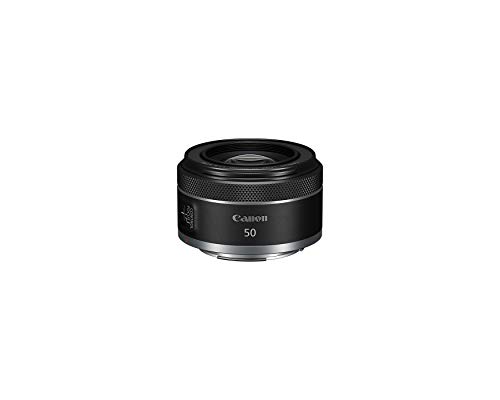
The Compact and Lightweight Fixed 50 millimeter Focal Length Lens is an ideal choice for photographers who want to capture sharp and clear images. With its large F, 1.8 Aperture, low-light photography is made easier while creative background blur is possible. The lens is equipped with a Stepping Motor (Gear-Type STM) which provides smooth and quiet continuous AF during video recording and when shooting photos. The Control Ring allows for direct setting changes, making it easier for photographers to adjust settings and capture their desired shots. The lens has optimized lens placement and coatings which help deliver outstanding color balance, while minimizing ghosting and flare. It is compatible with the Mirrorless R System (EOS RP, EOS R, EOS R5, or EOS R6). This lens is perfect for those who want to take their photography to the next level.
The Compact and Lightweight Fixed 50 millimeter Focal Length Lens is a perfect addition to your photography gear. With its large F, 1.8 Aperture, you can take advantage of low-light photography and achieve creative background blur. Its Stepping Motor (Gear-Type STM) ensures that you can have smooth and quiet continuous AF during video recording and when shooting photos. The Control Ring allows for direct setting changes, making it easier for photographers to adjust settings and capture their desired shots. The optimized lens placement and coatings help deliver outstanding color balance, while minimizing ghosting and flare. It is compatible with the Mirrorless R System (EOS RP, EOS R, EOS R5, or EOS R6). This lens is perfect for photographers who want to achieve high-quality images.
If you are in search of a lens that can take your photography to the next level, then the Compact and Lightweight Fixed 50 millimeter Focal Length Lens is the perfect choice. With its large F, 1.8 Aperture, low-light photography is made easier while creative background blur is possible. The Stepping Motor (Gear-Type STM) provides smooth and quiet continuous AF during video recording and when shooting photos. The Control Ring allows for direct setting changes, making it easier for photographers to adjust settings and capture their desired shots. The optimized lens placement and coatings help deliver outstanding color balance, while minimizing ghosting and flare. It is compatible with the Mirrorless R System (EOS RP, EOS R, EOS R5, or EOS R6). This lens is a must-have for photographers who want to capture high-quality images.
- Large F, 1.8 Aperture for low-light photography.
- Stepping Motor (Gear-Type STM) provides smooth and quiet continuous AF during video recording and when shooting photos.
- Control Ring allows for direct setting changes.
- Optimized lens placement and coatings help deliver outstanding color balance, while minimizing ghosting and flare.
- Compatible with the Mirrorless R System (EOS RP, EOS R, EOS R5, or EOS R6).
2. Alturaphoto Wide Angle Lens With Macro Portion.
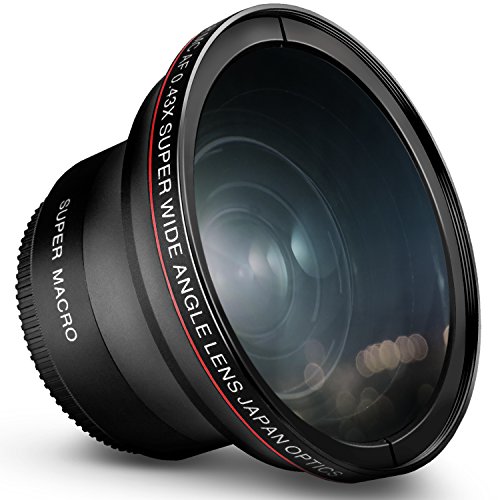
The lens attachment is a must-have for any photography enthusiast who wishes to capture breathtaking wide-angle photos. It is easy to screw on to the front of your lens, instantly expanding the field of view. Moreover, it features a detachable macro lens that allows users to capture high-resolution close-ups of small objects. The lens attachment is compatible with popular 58MM lens models, including Canon EF-S 18-55mm f/4-5.6 IS STM, Canon EF-S 55-250mm f/4-5.6 IS STM, Canon EF 75-300mm f/4-5.6 III USM, Canon EF-S 18-55mm f/3.5-5.6 IS STM, Canon EF 85mm f/1.8 USM, Canon EF 50mm f/1.4 USM, Nikon AF-P DX NIKKOR 70-300mm f/4.5-6.3G ED VR, Nikon AF-S NIKKOR 50mm f/1.8G, Nikon AF-S NIKKOR 50mm f/1.4G, Olympus M.Zuiko Digital ED 40-150mm f/4-5.6 R, Panasonic Lumix G X Vario 12-35mm f/2.8 II, and Fujifilm XC 16-50mm f/3.5-5.6 OIS II lenses.
Please ensure that your camera's lens thread size is 58mm before ordering as the lens attachment is compatible with 58mm lenses only. Camera models compatible with the lens attachment are Canon EOS Rebel T7 T7i T6i T6 T6s T5i T5 T4i T3i T100 SL3 SL2 SL1 90D 80D 77D 70D 1100D 700D 650D 600D 550D 7D Mark II 6D Mark II 5DS 5D Mark II 1D Mark II M3 M5 M6 M10 M50 M100 M200 R RP. To identify your camera's lens thread size, look for the number marked on the lens barrel or printed underneath your lens cap. The number is always preceded by a ''Ø'' (diameter) symbol. For example: Ø58 = 58mm lens thread size.
The lens attachment is backed by a 90-day satisfaction guarantee, ensuring that customers are satisfied with their purchase.
- Easy to screw on to the front of your lens for an instant expansion of the field of view
- Detachable macro lens for high-resolution close-ups of small objects
- Compatible with popular 58MM lens models from various brands
- Backed by a 90-day satisfaction guarantee
- – Compatible with 58mm lenses only
3. Canon Ef-S 24mm F/2.8 Stm Lens
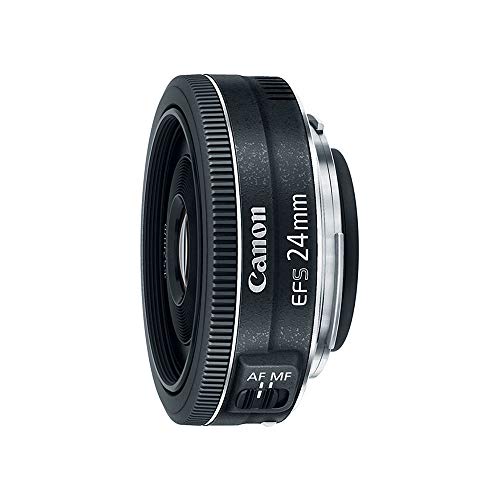
The Canon EF S 24mm f/2.8 STM lens is an excellent option for those who want to capture stunning photos with their Canon APS C cameras. This lens has a focal length of 24mm and a maximum aperture of f/2.8, providing great depth of field and low-light performance. It is equivalent to 38mm on a full-frame camera, making it an ideal lens for everyday use.
One of the standout features of this lens is its slim and lightweight design. It is the slimmest and lightest lens in the EF S series, perfect for photographers who are always on the go. The circular aperture with 7 blades delivers beautiful and soft backgrounds, making your subject stand out in every shot.
The Canon EF S 24mm f/2.8 STM lens has a maximum magnification of x0.27, allowing you to capture stunning close-up shots. The minimum focusing distance of 0.16 meters/0.5 feet makes it easy to get up close and personal with your subject.
Another great feature of this lens is its full-time manual focus, which allows you to make manual focus adjustments while in One Shot AF mode. This makes it easy to fine-tune your focus and capture the perfect shot every time.
This lens is compatible with all non-full-frame Canon EOS digital SLRs, making it a versatile and reliable option for photographers of all skill levels.
- Slim and lightweight design
- Circular aperture with 7 blades for beautiful, soft backgrounds
- Full-time manual focus allows manual focus adjustments while in One Shot AF mode
- Maximum magnification of x0.27 for stunning close-up shots
- Compatible with all non-full-frame Canon EOS digital SLRs
- – Not suitable for full-frame cameras
4. Canon Ef 50mm F/1.8 Stm Lens
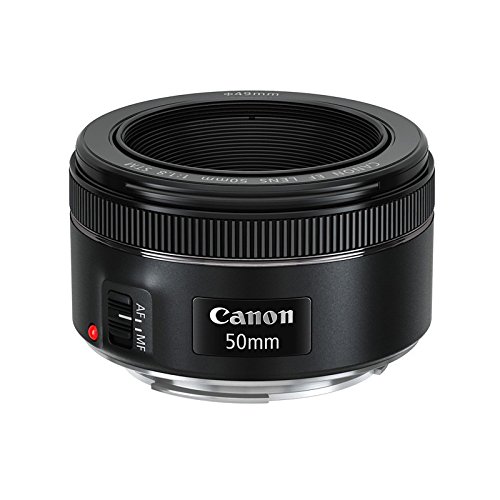
The 50 millimeter focal length and maximum aperture of f/1.8 makes this lens an excellent choice for capturing stunning portraits, fast-action shots, and low-light photography. With a horizontal, vertical, and diagonal angle of view of 40º, 27º, and 46º, respectively, this lens allows for versatile shooting options. It has a minimum focusing distance of 1.15 feet (0.35 meters) and a maximum magnification of 0.21x, making it possible to capture stunning close-up shots with great detail.
Equipped with a stepping motor (STM), this lens delivers near-silent, continuous move Servo AF for movies and smooth AF for stills. The 80 millimetre effective focal length on APS C cameras and 50 millimetre on full frame cameras make it versatile and suitable for a wide range of shooting styles. The lens construction features 6 elements in 5 groups, which ensures high-quality images with excellent contrast and sharpness.
Overall, this lens is an excellent choice for photographers who are looking for a high-quality, versatile lens that delivers outstanding performance in a wide range of shooting scenarios.
- 50 millimeter focal length and maximum aperture of f/1.8 is perfect for portraits, action, and nighttime photography
- Stepping motor (STM) delivers near-silent, continuous move Servo AF for movies and smooth AF for stills
- 80 millimetre effective focal length on APS C cameras, 50 millimetre on full frame cameras
- Lens construction features 6 elements in 5 groups, ensuring high-quality images with excellent contrast and sharpness
5. Canon Ef 75-300mm F/4-5.6 Iii Telephoto Zoom Lens For Canon Slr Cameras, 6473a003 (Renewed)
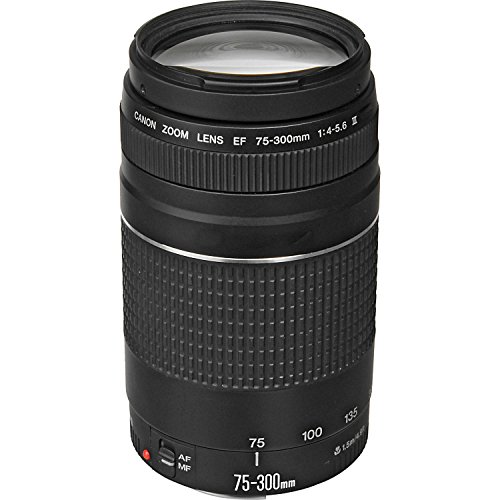
The EF mount lens is a versatile and compact lens that is perfect for everyday use. It has a wide aperture range of f/4-45, which allows for flexibility in low light conditions. The lens also features a DC autofocus motor, which ensures fast and accurate focusing.
One of the standout features of this lens is its 4.9-foot minimum focus distance. This allows for close-up shots with excellent detail and clarity. The lens also has a 58mm filter thread diameter, which is a standard size for many filters.
With a 32- to 8-degree diagonal angle of view, the lens is suitable for a wide range of photography styles. Additionally, it measures 2.8 inches in diameter and 4.8 inches long, making it a compact and portable option for photographers on the go. The lens weighs 16.8 ounces, making it lightweight and easy to carry.
The lens features an improved mechanism that makes zooming smoother, allowing for more precise control. The front part of the zoom ring sports a silver ring, which adds a touch of style to the lens.
Overall, the EF mount lens is an excellent choice for photographers who want a versatile and high-quality lens for everyday use. With its fast autofocus, close focusing distance, and compact size, it is sure to be a valuable addition to any photographer's kit.
- Wide aperture range for flexibility in low light conditions
- DC autofocus motor ensures fast and accurate focusing
- 4.9-foot minimum focus distance for close-up shots with excellent detail
- Compact and portable design for photographers on the go
- Improved mechanism for smoother zooming and more precise control
- – N/A
6. Limostudio Soft Lighting Kit With Umbrella Reflector
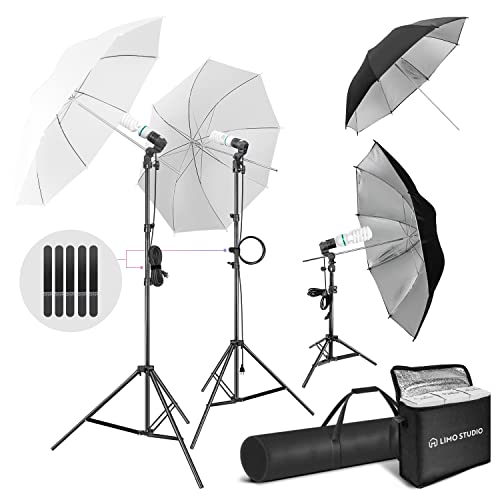
The 18-piece photography lighting kit is perfect for all your photographic needs. The kit includes three 45W CFL bulbs, three bulb sockets, two white 33-inch umbrella reflectors, and two black/silver 33-inch umbrella reflectors. It also comes with two 82.3-inch light stands and five reusable fastening cable ties. Additionally, the kit includes one 29.8-inch light stand, one bulb carry bag, and one photo equipment carry bag.
The 45W photo CFL bulb has a color temperature of 6000K, a brightness of 1820 lumens, and an E26/E27 standard screw base. It is designed to provide maximum energy savings up to 80%. The 33-inch diameter white umbrella reflector is made of enhanced nylon and works well with any flash or lighting fixture. The kit is suitable for camera shooting, studio portraits, food, animals, children's fashion, industrial, scientific, and technical commercial photography.
- Comes with a complete set of lighting equipment for all your photographic needs
- The 45W photo CFL bulb provides maximum energy savings up to 80%
- The 33-inch diameter white umbrella reflector works well with any flash or lighting fixture
- Suitable for a wide range of photography genres, including studio portraits, food, animals, and children's fashion
- – May not be suitable for professional-grade photography
- – The quality of the equipment may not be as high as more expensive options
7. Full Frame Telephoto Lens For Canon Eos
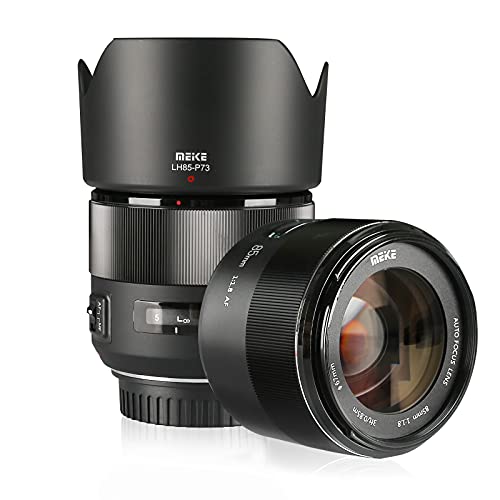
The lens has a 67mm filter size and a minimum focus distance of 0.85m. The aperture range is from F/1.8 to F/22, and the lens construction consists of 6 groups of 9 pieces. It provides a full-frame view with a level of 16 degrees, vertical of 24 degrees, and diagonal of 28.5 degrees. The lens also has electronic contacts and a USB connection for firmware upgrades. It is perfect for a variety of photography genres, including architecture, landscapes, portraits, sports, and theatre photography.
- Wide aperture range
- Full-frame view
- USB connection for firmware upgrades
- Suitable for a variety of photography genres
8. Portrait Pro Lens For Canon Rebel Series
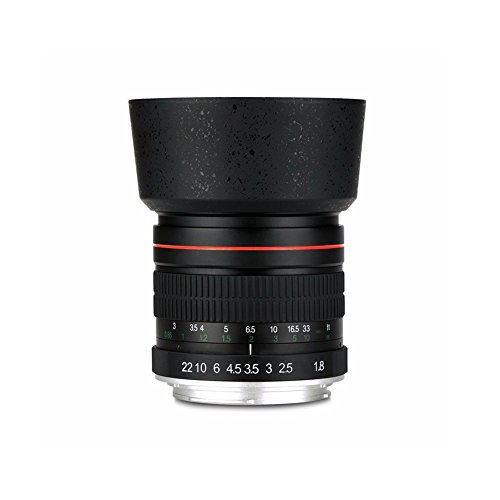
The 8 pieces of circular aperture and large focus rings make this manual focus lens a great choice for photographers looking to enhance their skills. It features internal focusing (IF) hybrid aspherical lenses (H-ASP) and ultra multi coating (UMC). This lens is compatible with Canon EOS Rebel T7, T7i, T6, T6i, T5, T5i, SL2, 80D, 77D, 700D, 70D, 60D, 50D, 5D, 6D, 7D, 600D, 550D, 200D, 150D, 100D, 1300D, 1400D, and 1500D. However, it requires complete manual focus operation and is not recommended for SLR beginners. The lens is perfect for photographers with excellent experience in equipment looking to achieve a shallow depth of field and a pleasing bokeh quality.
To use this lens correctly, you need to switch to MF MODE because there are no electronic contacts. Your camera will not detect the lens when mounted, which is why it shows "NO LENS ATTACHED". Here are some tips for using our manual lens: 1) Set the mode dial to Manual (M). 2) Set the Release w/o Lens option in the camera menu to Enable. 3) Set the Shutter lock option in the camera menu to Off: no lens.
- 8 pieces of circular aperture for a pleasing bokeh quality
- Smooth and large focus rings for easy adjustments
- Internal focusing (IF) hybrid aspherical lenses (H-ASP) and ultra multi coating (UMC) for high-quality images
- Compatible with a wide range of Canon EOS cameras
- – Requires complete manual focus operation, not suitable for SLR beginners
- – No electronic contacts, which may be confusing for some users
9. Canon Ef 100mm F/2.8l Is Usm Macro Lens For Canon Digital Slr Cameras, Lens Only
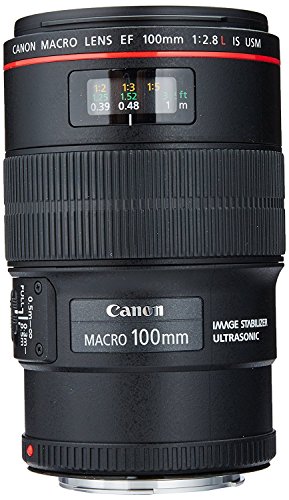
The Canon EF 100mm f/2.8L IS USM Macro Lens is a mid-telephoto macro lens with a 100 millimeter focal length and a maximum aperture of 1:2.8, providing excellent image quality and clarity for close-up photography. This lens has a construction of 15 elements in 12 groups, a 23.4-degree diagonal angle of view, and an inner focusing system with USM and a full-time manual focus option.
With a closest focusing distance of 0.99 feet or 0.3 meters, this lens has a maximum close-up magnification of 1x, allowing you to enjoy life-size close-up capabilities without needing an adapter. This lens has a filter size of 67 millimeters and comes with a lens hood of ET-73. The lens is also compatible with 67 millimeter filters.
The Canon EF 100mm f/2.8L IS USM Macro Lens is Canon's first mid-telephoto macro 'L' series lens to include Canon's sophisticated Image Stabilization. This feature enables you to capture sharp handheld images, even in low light conditions, without having to use a tripod. Additionally, the lens has near-silent Ultrasonic focusing, which provides you with fast, accurate, and quiet autofocus, making it perfect for use in any shooting situation.
Please note that this lens cannot be used with the EF1.4X II; EF2X II extenders, nor are there any compatible close-up lenses available. However, with its excellent image quality, versatility, and advanced features, the Canon EF 100mm f/2.8L IS USM Macro Lens is a great choice for anyone looking to capture stunning close-up photographs.
- Excellent image quality and clarity for close-up photography
- Sophisticated Image Stabilization for sharp handheld images in low light conditions
- Near-silent Ultrasonic focusing for fast, accurate, and quiet autofocus
- Life-size close-up capabilities without needing an adapter
- – Cannot be used with the EF1.4X II; EF2X II extenders
- – No compatible close-up lenses available
10. Lightdow Super Telephoto Lens For Canon Eos.
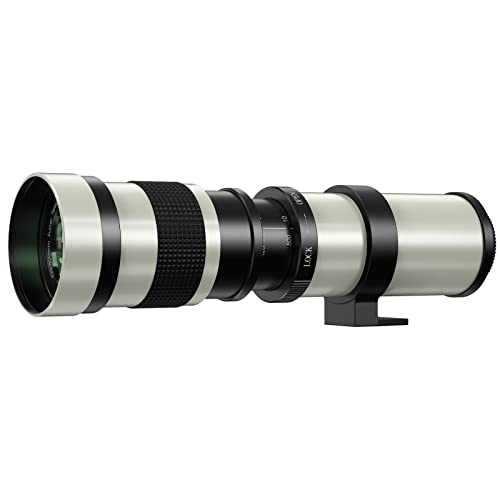
The manual focus telephoto zoom lens is designed to work with DSLR SLR cameras. It features advanced optics with multi-coated low-dispersion glass and anti-reflection coating to deliver high-quality images. The lens is constructed with solid full metal, which ensures its durability and longevity. It has a built-in T mount design that makes it compatible with most DSLR cameras on the market with corresponding T Ring, such as T2-Canon/T2-Nikon/T2-Sony etc.
It's important to note that this is a FULL Manual Lens and does not have electronic contacts. Therefore, the camera will not detect the lens when mounted, and it'll show as 'LENS NOT ATTACHED'. To use the lens correctly, switch to MF MODE. Also, set the mode dial to Manual (M), and enable the Release w/o Lens option in the camera menu. Set the Shutter lock option to Off: no lens. Fine-tune the front focusing ring to make the subject in-focus and take a sample picture. If the picture turns out dark, take the following steps to improve: Lower the shutter speed from 1/500s down to 1/100s or slower (1/50, etc.), raise the ISO number from ISO 100 to ISO 200/400/800, etc. Use a remote shutter release and tripod to increase image stability. Switch positions to allow more environmental light coming through the lens into the camera imaging sensor.
- Advanced optics with multi-coated low-dispersion glass and anti-reflection coating deliver high-quality images.
- Solid full metal construction ensures durability and longevity.
- Built-in T mount design makes it compatible with most DSLR cameras on the market with corresponding T Ring.
- – The lens is a fully manual lens, which may not be suitable for those who prefer automatic features.
- – It may take some practice to get used to manual focusing.
Best Lens For Architectural Photography FAQs
Can a wide-angle lens be used for architectural photography?
Absolutely! A wide-angle lens is an excellent choice for architectural photography as it allows you to capture a larger field of view and showcase the entire building or structure. With a wide-angle lens, you can capture the grandeur of a building's exterior and the intricate details of its interior spaces. Additionally, a wide-angle lens is great for capturing the context of the building in its surroundings, such as the landscape or cityscape. However, it's essential to remember that a wide-angle lens can distort the perspective of the building if not used correctly. Therefore, it's crucial to use proper composition and framing techniques to avoid any unwanted distortion. Overall, a wide-angle lens is a fantastic tool for architectural photography and can help you capture stunning and impactful images of buildings and structures.
How do tilt-shift lenses improve architectural photography?
Tilt-shift lenses are special lenses that are designed to improve architectural photography in several ways. These lenses allow photographers to shift the perspective and control the depth of field in their photos, which can greatly enhance the overall look and feel of architectural images.
One of the main benefits of tilt-shift lenses is that they can help to correct perspective distortion. When photographing tall buildings, for example, it is common for the lines to appear distorted or skewed due to the angle of the camera. By using a tilt-shift lens, photographers can shift the lens up or down to adjust the perspective and make the lines appear more straight and true to life.
In addition to perspective correction, tilt-shift lenses can also help to control the depth of field in architectural photography. By tilting the lens, photographers can create a narrow plane of focus that highlights specific details of the building while blurring out the background. This can create a more dramatic and visually interesting image.
Overall, tilt-shift lenses are a powerful tool for architectural photographers looking to capture stunning, professional-quality images. They offer precise control over perspective and depth of field, allowing photographers to create images that are truly unique and visually striking.
Should I use a prime or zoom lens for architectural photography?
When it comes to architectural photography, both prime and zoom lenses have their advantages and disadvantages. Prime lenses are fixed focal length lenses that offer sharper and clearer images, with less distortion and better low-light performance. They also tend to be faster than zoom lenses, which means they have wider apertures that allow more light in and can create a shallower depth of field. This can be useful for creating a more artistic and dramatic effect in your photos.
On the other hand, zoom lenses offer flexibility and versatility. They allow you to quickly adjust your focal length without having to switch lenses, which can be especially useful when shooting in tight spaces where you can't physically move closer or further away from your subject. They also tend to be more affordable than prime lenses, making them a good option for those on a budget.
Ultimately, the choice between a prime or zoom lens for architectural photography will depend on your personal preferences and shooting style. If you prioritize image quality and have the budget for it, a prime lens may be the better choice. But if you need flexibility and versatility, a zoom lens may be more practical.
What are the best lenses for architectural photography?
Architectural photography requires capturing precise details and angles of buildings, interiors and exteriors. The right lens can make a huge difference in capturing the essence of the building. The ideal lens for architectural photography is a wide-angle lens, which can capture a wide field of view and provide a sense of depth and scale. A tilt-shift lens is also highly recommended for its ability to correct perspective distortion and keep parallel lines straight, especially when photographing tall buildings. The Canon TS-E 17mm f/4L and Nikon PC-E NIKKOR 24mm f/3.5D ED are popular choices for tilt-shift lenses. For wide-angle lenses, the Canon EF 16-35mm f/2.8L III USM and Nikon AF-S NIKKOR 14-24mm f/2.8G ED are highly recommended. These lenses provide excellent sharpness, color accuracy, and minimal distortion. Ultimately, the best lens for architectural photography will depend on personal preferences and shooting style, but these lenses are a great starting point for capturing stunning architectural imagery.
What focal length is ideal for architectural photography?
The ideal focal length for architectural photography depends on several factors such as the size of the building, the distance from the camera, and the desired effect. Generally, a wide-angle lens between 16mm to 35mm is often used for capturing the entire building or structure in a single frame. This allows the photographer to showcase the scale and grandeur of the architecture.
However, it's crucial to keep in mind that the wider the angle, the more distortion can occur. To avoid distortion, some photographers prefer to use a tilt-shift lens which allows them to adjust the perspective and keep the lines straight.
On the other hand, a telephoto lens between 70mm to 200mm can be used to capture details and specific sections of the architecture. This type of lens is particularly useful when shooting from a distance and when the photographer wants to isolate specific details.
Ultimately, the choice of focal length depends on the photographer's artistic vision and the effect they want to achieve in their photographs.

